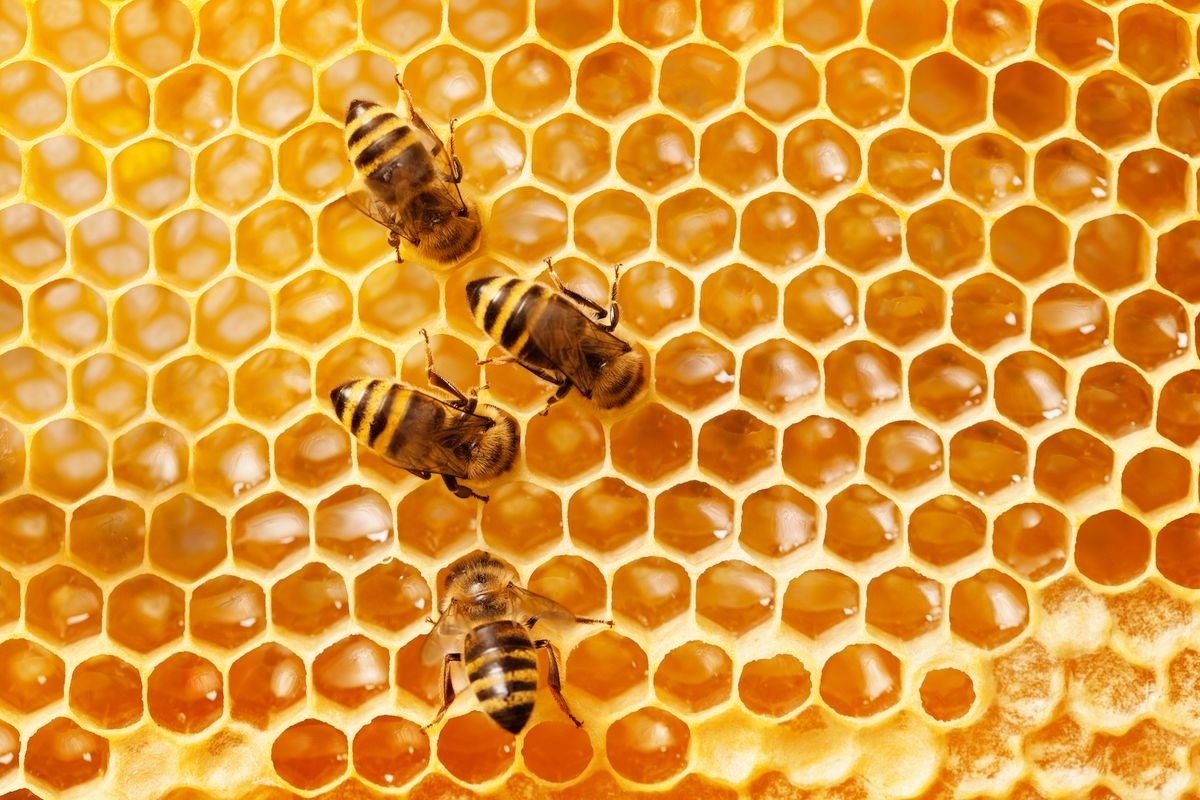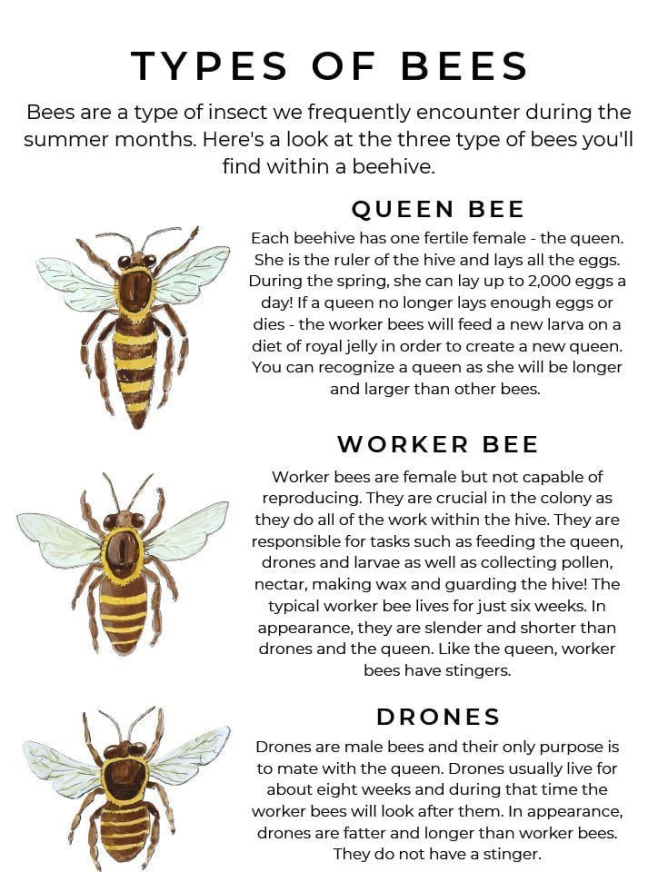





Copyright infringement not intended
Picture Courtesy: https://www.livescience.com/honeybees.html
Context: The majority of the bee species are solitary, lacking queens; they lay eggs in simple nests and independently care for them. In contrast, social bee species such as honey bees, bumble bees, and stingless bees live in colonies with queens and intricate structures.
Details
|
About Bees |
|
|
Feature |
Description |
|
Species |
Over 20,000 known species, categorized into 7 main families: ●Apidae (honey bees, bumblebees) ●Megachilidae (leafcutter bees, mason bees) ●Colletidae (sweat bees) ● Andrenidae (andrena bees) ●Halictidae (sweat bees) ● Stenotritidae (dilophon bees) ● Melittidae (melittid bees) |
|
Classification |
Insects in the order Hymenoptera, suborder Apocrita, are closely related to wasps and ants. |
|
Size |
Varies greatly depending on species: ● Dwarf bees: 2-3 millimeters (smaller than a mosquito) ●Giant honey bee: Up to 4 centimetres (wingspan) |
|
Social Behavior |
Social bees: Live in highly organized colonies with distinct castes: ●Queen: Reproduces, lays eggs ●Workers: Females, sterile, perform all colony tasks except reproduction (foraging, nest building, brood care) ●Drones: Males, sole purpose is mating with the queen Solitary bees: Live alone, each female builds her own nest, provisions it with pollen and nectar, lays eggs, and cares for young until they emerge as adults. |
|
Diet |
Primarily nectar and pollen: ●Nectar: Provides carbohydrates for energy ●Pollen: Provides protein, vitamins, and minerals for growth and development Some bee species may also consume other liquids like honeydew (sap excreted by insects) |
|
Habitat |
●Found on every continent except Antarctica. ●Diverse habitats include: Forests, Grasslands, Deserts, Mountains, and Urban areas (with access to flowering plants). |
|
Body |
●Divided into three sections: head, thorax, abdomen ●Two pairs of membranous wings for flight ●Six legs for walking, climbing, and manipulating objects ●Body covered in branched hairs that aid in pollen collection ●Most female bees have a stinger, a modified ovipositor used for defence and egg-laying ●Male bees lack stingers |
|
Reproduction |
A complex process that varies slightly between social and solitary bees: ●Social bees: Queen lays fertilized eggs (develop into females) and unfertilized eggs (develop into males). Workers care for larvae and pupae. ●Solitary bees: The female provisions a nest cell with pollen and nectar, lays a single egg, seals the cell, and may repeat for multiple cells. Larva feeds on provisions, pupates, and emerges as an adult. |
|
Importance |
Pollination: Essential pollinators for a wide variety of flowering plants. By transferring pollen between flowers, bees enable plant reproduction and ensure fruit and vegetable production for humans. Honey production: Honey bees produce honey, a valued food source for humans with medicinal properties. Biodiversity: Bees contribute to healthy ecosystems by supporting a diversity of plant life. |
|
Threats |
●Habitat loss due to deforestation and urbanization ●Pesticide use, which can directly kill bees or harm their food sources ●Climate change, impacting flowering times and bee behaviour ●Parasites and diseases |
|
Communication |
Social bees use a complex communication system called the waggle dance to share information about food sources, distance, and direction with other colony members. |

Why do bees have queens?
Division of Labor
One fundamental reason for having queens in bee colonies is the division of labour. In a bee colony, there are different castes with specific roles:
Reproductive Strategy - Kin Selection:
Egg-Laying Capacity
Complex Hive Structures
Mating Behavior and Genetic Diversity
Colony Maintenance and Survival
Evolutionary Advantage
Comparison with Other Social Insects
Conclusion
|
PRACTICE QUESTION Q. Bumblebees are important pollinators because: 1. They are active at lower temperatures than honeybees. 2. They can vibrate their wings rapidly to release pollen from flowers. 3. They have a longer proboscis that allows them to reach deeper into flowers. How many of the above statements are correct? A) Only one B) Only two C) All three D) None Answer: C Explanation: Active at lower temperatures than honeybees: This statement is correct. Bumblebees are well-adapted to cooler temperatures compared to honeybees. They can fly and forage for nectar and pollen in cooler conditions, making them important pollinators in colder climates. Can vibrate their wings rapidly to release pollen from flowers: This statement is correct. Bumblebees exhibit a behaviour called "buzz pollination" or "sonication." They can rapidly vibrate their flight muscles, creating vibrations that dislodge pollen from the anthers of certain flowers. This unique ability allows them to access pollen that other pollinators might not reach. Have a longer proboscis that allows them to reach deeper into flowers: This statement is correct. Bumblebees have a relatively long proboscis (tongue), which enables them to access nectar in flowers with deeper tubes. This adaptation allows them to pollinate a variety of flowers with different shapes and sizes. In summary, all three statements about bumblebees are correct, making option C) "All three" the correct answer. |











© 2025 iasgyan. All right reserved